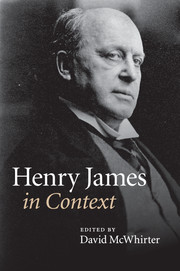Book contents
- Frontmatter
- Contents
- List of Illustrations
- Notes on Contributors
- Preface
- Abbreviations
- Chronology
- Part One Life and career, times and places
- Part Two Historical and cultural contexts
- Chapter 9 Aestheticism and Decadence
- Chapter 10 Authorship
- Chapter 11 Children
- Chapter 12 Consumer culture
- Chapter 13 Cosmopolitanism
- Chapter 14 Courtship, marriage, family
- Chapter 15 Ethics
- Chapter 16 Language
- Chapter 17 Law
- Chapter 18 Manners
- Chapter 19 Media and communication technologies
- Chapter 20 Modernism
- Chapter 21 Money and class
- Chapter 22 Museums and exhibitions
- Chapter 23 Nationalism and imperialism
- Chapter 24 Print culture
- Chapter 25 Psychology
- Chapter 26 Race
- Chapter 27 Realism and naturalism
- Chapter 28 Sexualities and sexology
- Chapter 29 Social sciences and the disciplines
- Chapter 30 Things
- Chapter 31 Time
- Chapter 32 Travel and tourism
- Chapter 33 Urbanity
- Chapter 34 Visual culture
- Chapter 35 Women and men
- Chapter 36 Work
- Part Three Reception
- Further reading
- Index
- References
Chapter 33 - Urbanity
Published online by Cambridge University Press: 05 August 2014
- Frontmatter
- Contents
- List of Illustrations
- Notes on Contributors
- Preface
- Abbreviations
- Chronology
- Part One Life and career, times and places
- Part Two Historical and cultural contexts
- Chapter 9 Aestheticism and Decadence
- Chapter 10 Authorship
- Chapter 11 Children
- Chapter 12 Consumer culture
- Chapter 13 Cosmopolitanism
- Chapter 14 Courtship, marriage, family
- Chapter 15 Ethics
- Chapter 16 Language
- Chapter 17 Law
- Chapter 18 Manners
- Chapter 19 Media and communication technologies
- Chapter 20 Modernism
- Chapter 21 Money and class
- Chapter 22 Museums and exhibitions
- Chapter 23 Nationalism and imperialism
- Chapter 24 Print culture
- Chapter 25 Psychology
- Chapter 26 Race
- Chapter 27 Realism and naturalism
- Chapter 28 Sexualities and sexology
- Chapter 29 Social sciences and the disciplines
- Chapter 30 Things
- Chapter 31 Time
- Chapter 32 Travel and tourism
- Chapter 33 Urbanity
- Chapter 34 Visual culture
- Chapter 35 Women and men
- Chapter 36 Work
- Part Three Reception
- Further reading
- Index
- References
Summary
The evolution of the representational goals and techniques that we call ‘the realist novel’ is inseparable from the history of cities in the nineteenth and early twentieth centuries. In some cases, critical views of the relationship between writers and cities are totalizing: ‘London created Dickens, just as Dickens created London’ affirms Peter Ackroyd, in the secure knowledge that Dickens’s melodramas required the vision of the city as a place of ‘imprisonment and suffocation’. A similar case could be made for the other great architect of realist fiction, Honoré de Balzac: from banking systems to the mœurs of domestic servants, from the rituals of social climbing to the assortments of shoes, no aspect of Paris under the Second Empire is empty of suggestion. In the great age of realism – roughly 1840 to 1880 – the city is neither an object of mere description nor a backdrop for the drama of good and evil. Rather, it permeates every aspect of character: its institutions shape aspiration and temptation; its customs shape the trajectory of success or abjection; it is everywhere and always permeated by money – wanting it, getting it, having it, losing it. The city’s designs for living – interior and exterior, public and private – determined in advance the kinds of character interaction that novelists could dramatize, as well as the climax or ‘upshot’ of these interactions. The rendering of streets, buildings, slums, bourgeois quartiers was often so exact that the novel came to function as a map, or as a simulacrum, of the city at a certain point in its development. To put this another way, the realist novel became less a representation of urban architecture than a kind of architecture, one that shaped reading practices in ways similar to our traversing of urban spaces themselves. In the hands of the realists, reading quickly demanded not merely a visual imagination but also a keen spatial sense, so that we all but unconsciously negotiate certain chapters like drawing rooms, others like a warren of oppressive, winding streets and alleys.
- Type
- Chapter
- Information
- Henry James in Context , pp. 354 - 363Publisher: Cambridge University PressPrint publication year: 2010
References
- 2
- Cited by



